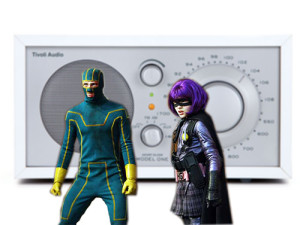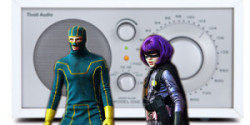 Twitter has 49 million users every month in the US. Facebook has 198 million. There are about 6 million US Spotify users. What about terrestrial broadcast radio, that old-school, supposedly dying analog medium?
Twitter has 49 million users every month in the US. Facebook has 198 million. There are about 6 million US Spotify users. What about terrestrial broadcast radio, that old-school, supposedly dying analog medium?
Radio has 241.8 million listeners per week, not just per month. Take that, Silicon Valley.
Those numbers are according to Nielsen’s December RADAR Radio Listening Report, which also shows an increase of 700,000 weekly listeners over December 2012, and an increase of 5.3 million since 2009. There was particularly strong growth in Hispanic listeners, accounting for an increase of 372,000 in the last year.
This data illustrates how out-of-whack popular conceptions of popularity and relevance can be, especially those reflected in the press.
As an educated, middle-class white male I certainly know many people who do not listen to terrestrial radio, preferring music services like Pandora or Spotify, podcasts or maybe satellite radio. I also know folks who really don’t own radios, professing them as superfluous when they can listen on their computers, tablets and smartphones.
When the topic of radio comes up at social occasions it’s not at all unusual for the conversation to swing to the theme that “radio sucks,” and that the only radio worth listening to is public radio, and maybe a college or community station, but not too much. Folks inevitably tell me how loading up their smartphones with music, audiobooks and podcasts beats the hell out of relying on the radio, except under extreme circumstances.
Like me, these people are mostly educated and from the middle class. We have smartphones, wifi and more listening choices than we know what to do with. Radio is a choice, mostly not a necessity.
I’ll bet that this milieu isn’t too different from those of most journalists and commentators, especially those working a tech beat. I wouldn’t be surprised if a majority of writers mostly only listen to the radio for news, and suffer commercial radio only if they have to. Like so many people I know they have plenty of choices online and elsewhere.
That’s where the “radio is dying” theme comes from. It does not come from radio’s actual fortunes and performance. It’s a perception based upon real data, just not data that is representative of the country as a whole. It comes from our own relatively rarefied experience and the experience of those around us. It does not come from being around and talking to the millions of people who still use radio every week, if not every day.
I’m not trying to deny reality. Radio profits have taken a dive in the last decade (but where are Facebook and twitter profits?). 17 years of industry consolidation obliterated localism and local service in all but the biggest markets, while playlists got tighter, talent was fired and the overall commercial radio listening experience went down the toilet. So, sure, when the internet and mobile technology gave us more interesting, diverse and customizable alternatives, those of us with access took advantage as soon as we could.
But not everybody has access to these alternatives, or the same kind of access. Knowledge workers in a cubicle with constant internet access can jam to Pandora all day long, provided their employer doesn’t block or limit it. But what about somebody working on a shop floor? Or a contractor on a job site where headphones would block out important communication and running Spotify on a smartphone all day would kill both the battery and data caps? The radio is still a reliable companion for someone who drives a car, truck or taxi all day. Radios work great in these environments, and the classic rock, country or spanish-language station beats having nothing at all.
Lots of people choose radio, too. Millions love getting their daily dose of Rush and Hannity, or news and weather on the 8s. Many of these listeners are middle-class knowledge workers, and plenty are middle-class folks who don’t work behind a desk, or who are retired. And many, many of these listeners are not middle class, or are working very hard to stay in the middle class. They are not Luddites, nor are they unsophisticated. No, they get a service that is adequate, useful, or even timely and enjoyable, all for a very low cost and next to no hassle. And there are 700,000 more of them in 2013 than in 2012.
Now, has the commercial radio industry rested on its laurels? Hell, yes. Did big players like Clear Channel foolishly fail to pay heed to the internet threat that began looming at the turn of the century? Most certainly. Did owners squeeze the life out of commercial music radio in search of quick profits? Double hells-yes!
But radio is not a lost cause, nor is it an obsolete medium. Radio’s problems can be solved by radio broadcasters taking a fresh look at their listeners and working hard to deliver better service. Importantly, broadcasters need to take a long hard look at the listeners they’ve lost, and the very hardest look at the potential listeners who have never tuned in.
There is a lot to learn from Facebook, Twitter, Mashable, Upworthy and even Amazon, both from their successes and mistakes. The biggest lesson is to start taking chances, making changes and moving a shitload faster than radio ever has before. I still see debates in the radio press about the classic rock format, and nobody thought would work… twenty freaking years ago!
We need to see new and tweaked formats every month and every year, not every decade.
While adding 700,000 listeners in a year is good news, radio cannot rest on this modest growth. Radio hasn’t totally screwed the pooch, which means there’s still a strong platform to build on. But it’s time to raze some old edifices and build lots of new ones on that platform. Listeners who want radio are there. Take them for granted at your own peril.



